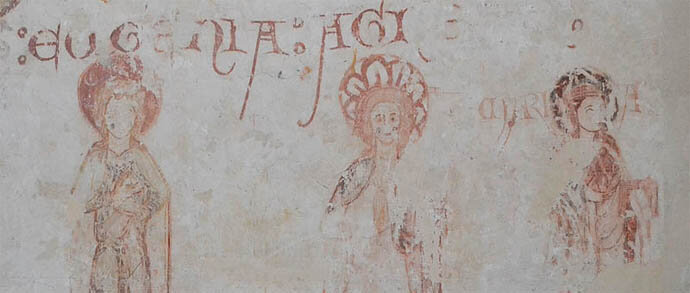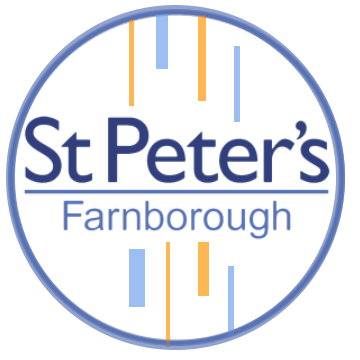
Our History
THE HISTORY OF ST PETER'S CHURCH
St Peter's Church dates back to the 1200s to the time of the Normans and has been added to by various generations over the centuries. The earliest church records date back to 1584.
There has probably been a church on the site of St Peter’s since Anglo-Saxon times but the present building dates, in part, from the Norman period, around 1180. Many changes have been made since that time with the most recent occurring in 2011-2. More detail can be found in the documents linked from this page but what follows is a brief history.
Farnborough, although part of the manor of Crondall, was an independent parish certainly by the mid 900s and would therefore have had a small wooden church or chapel. In 1086 the Domesday Book survey recorded only 16 adult males living in Farnborough so the total population was probably no more than 50. No trace of an Anglo-Saxon building remains.
The next major changes happened in the 17th century when the gallery was installed along with a screen separating the nave from the newly built “Lord’s Aisle” (a sort of private chapel for the Lord of the Manor) and to the east of that a small chancel. The wooden framed tower was also built then - four of its eight bells date back to the 1600s, the earliest being from 1613.
Finally in 2011-12 during building work to lay a new floor (and other associated work) following an attack by death-watch beetle, a large burial vault built by Henry Wilmot, Lord of the Manor from 1768, was discovered under the nave. The new floor means easy access to the building is now possible for all including wheelchair users and children in buggies.
The oldest parts of the current building are the north and west walls, the north doorway and the wall paintings which were probably painted within a couple of decades of the church being built. Unfortunately when the north porch was added in the 15th century it partly obscured the fine Norman arch.
The rapid growth of Farnborough after the arrival of the army in Aldershot in the 1850s led to the next main developments. A new chancel was built in 1886 and in 1900/1 seating was increased by the addition of north and south transepts and a south aisle. After the Second World War St Peter’s saw another growth in numbers and extensions were added to the north and south of the chancel in the 1960s.
The removal of pews and the introduction of chairs, which can be cleared away into a very small area, allows the church building to be used in many different ways meeting the needs of 21st century life. Much may have changed over the centuries but our main desire now, as it was in 1200, is to enable each generation to worship God.
‘Now I say to you that you are Peter (which means ‘rock’), and upon this rock I will build my church, and all the powers of hell will not conquer it.’ - Matthew 16:18
Downloadable Documents













